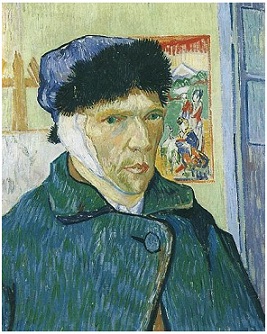Useful links & ideas for research:
Look for artists that use symbolism in their work, artists that use unusual and interesting media, as well as those that focus on self portraiture. Historical Examples could include Frida Khalo, Vincent Van Gogh, Pablo Picasso, Andy Warhol, Gauguin, Rembrant etc
http://www.fridakahlo.org
http://www.frida-kahlo-foundation.org
http://www.moma.org/collection/artist.php?artist_id=2963
http://www.vangoghgallery.com/misc/selfportrait.html
http://www.sultangallery.com/category/monthly-program-highlights/


Artwork Analysis: The two Fridas 1939: Shortly after her divorce from Diego Rivea, Frida completed this self-portrait of two different personalities. In her diary, Frida writes that this painting originated from her memory of an imaginary childhood friend. Later she admitted it records the emotions surrounding her separation and marital crisis.
On the right, the part of her person which was respected and loved by Diego, is the Mexican Frida in Tehuana costume. In her hand she holds an amulet bearing the portrait of Diego as a child. On the left, a more rather European Frida in a lacy white Victorian wedding dress, the Frida that Diego abandoned. The hearts of the two women lie exposed, a device Frida often used to express her pain. The unloved Frida's heart is broken while the other Frida's heart is whole. From the amulet that Frida is holding springs a vein that travels through both women's hearts and is finally cut off by the surgical pincers held in the lap of the rejected Frida. In despair, Frida tries to stop the flow of blood from Diego but it keeps dripping…she is in danger of bleeding to death. The stormy sky filled with agitated clouds may reflect Frida's inner turmoil. Holding her own hand, she is her only companion.